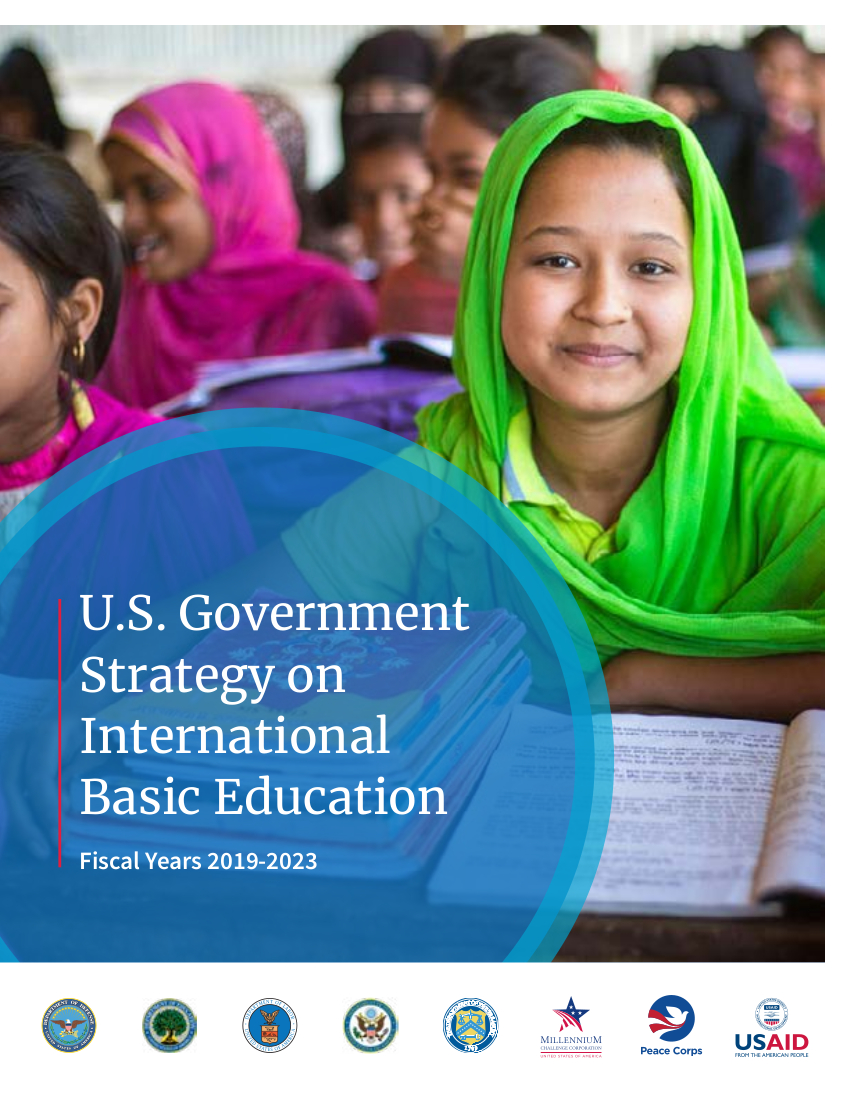- What We Do
- Agriculture and Food Security
- Democracy, Human Rights and Governance
- Economic Growth and Trade
- Education
- Environment and Global Climate Change
- Gender Equality and Women's Empowerment
- Global Health
- Humanitarian Assistance
- Transformation at USAID
- Water and Sanitation
- Working in Crises and Conflict
- U.S. Global Development Lab
Speeches Shim
The U.S. Government Strategy on International Basic Education for Fiscal Years 2019 - 2023 (the Strategy) was released on September 14, 2018. The Strategy demonstrates the U.S. Government's commitment to international education and presents an opportunity to advance global diplomatic and development leadership on pressing international education challenges, as called for in the Reinforcing Education Accountability in Development (READ) Act, Division 2, P.L. 115-56.
U.S. Government Strategy on Basic Education ![]() (pdf - 3 MB)
(pdf - 3 MB)
The goal of the Strategy is to achieve a world where education systems in partner countries enable all individuals to acquire the education and skills needed to be productive members of society. To accomplish this goal, the U.S. Government has two principal objectives:
- Improve learning outcomes; and
- Expand access to quality basic education for all, particularly marginalized and vulnerable populations.
The U.S. Government recognizes that its investments in international education serve as a force multiplier for all of its work in international development. Strengthening education systems in developing countries advances U.S. foreign policy goals, promotes U.S. and international security, and helps accelerate economic growth at home and abroad.
The Strategy provides an opportunity for the U.S. Government to improve the effectiveness and efficiency of its international basic education programs and partnerships by increasing coordination and leveraging each department, agency, and official’s unique experience and expertise at the global and country level. These departments, agencies, and officials include the U. S. Agency for International Development (USAID), Department of State, Department of the Treasury, Department of Labor, Department of Education, Department of Agriculture, Department of Defense, Chief Executive Officer of the Millennium Challenge Corporation (MCC), National Security Advisor, and Director of the Peace Corps.


Comment
Make a general inquiry or suggest an improvement.